Implementation of do While Loop in Flowchart
Happy Easter printables – the best DIY solution to make your Easter cards and flyers aggrandized & visually stunning.
Regardless of the work scope, a structural outline or flowchart is what you need for a quick understanding of processes & operations; even if you're a business person, streamlining the operations in a flow diagram is the primary requisite to enhance the understanding of entrepreneurs. To accomplish complex flowcharts, you can opt for loops to simplify the execution the repetitive operations. In this connection, for loop, while loop, and do while flowcharts are most extensively used in different areas; here, we'll illustrate everything you need to know about implementing do while in Flowcharts specifically.
1. Loops in Flowchart
Loops are effective in Flowcharts, given the extreme expediency. Because for instance, if you're drawing a programming flowchart, you may require to repeat certain operations a bunch of times, which is a tedious job likely to consume several hours; in such a case, you can straightforwardly hanker for looping structures.
2. How Do Loops Work in Flowcharts?
The loops functioning in Flowcharts vary with the kind of loop structure implemented. However, the core concept stays the same since loops are used where we may need to perform a task or steps repeatedly. Upon implementing the loops in Flowcharts, we use flow lines to repeat a certain block of information repeatedly. In most cases, we enter the flowchart body by entering a particular input value and a condition that needs to be reached. If the given condition is satisfied, the Flowchart proceeds to the output value. On the other, if the condition becomes false, the flowchart terminates. The entire loop Flowchart follows the particular loop syntax that matches the specific requirments.
3. Overview of Do While Loop
Do-while loops are much similar to while loops; the main difference is that in do-while loops condition comes after the body, unlike while loops. Given this, do while loop is also known as exit controlled loop structure.
Unsurprisingly, looping structures are commonly used in various computer languages. In this context, considering the do-while loop in C# language, its syntax is pretty straightforward; the code initiates with the keyword "do."
Syntax of the do-while loop in C#
do {
statement(s);
} while( condition );
The above-cited do-while syntax depicts that the loop will execute the body section at least once, even before checking the program condition. Then if the condition is true, the program will again execute the statements block, and the same process continues until the condition turns out false. Because if the condition is false, the program will end the execution process instantly.
4. Example of a do While Loop Flowchart
A do while loop occupies excessive importance since they are exit control statement, executing the statement at least once in the program. The following detailed guide or this visual example about the do while looping in flowcharts explained with a real-time situation will clarify your doubts.
The execution mechanism of a while loop and do while loop is almost similar, with the only difference that the do while loop checks the iteration condition after executing the operation; in contrast, the while loop tests the condition before the execution and does not carry out the task even once if the condition is not satisfied.
Suppose you need to print the numbers 4, 5, 6, 7, 8, and 9 in your program, the initiation (value of i) you set as 4, and the condition you implement is that "Whether the value of i lowers than 4 or exceeds than 9", the do while loop will execute the operation in its first round, printing the "num" 4.
After the first round, the do while will mechanize and print the number according to the provided condition, for example, when the "1" is added or subtracted into the value of i (which is 4). The do while loop will stop working if the provided condition becomes false; as in this specific case, the value becomes greater than 9 or lesser than 4.
5. Benefits and Limitations of Do While Loops in Flowcharts
Every loop type used in programming languages contains its discrete uses, benefits, as well as drawbacks. We have discussed both the benefits and limitations of using a do while loop in a programming flowchart:
Benefits of Do While Loops:
- Do while loops are also regarded as "fast-paced" loops since they execute the commands swiftly, saving time.
- Unlike while loops, the do while loops enable you to execute them once to see the outcome of a particular code, even if the statement is untrue.
- Do while loops test the iteration condition after executing the process, hence, less dependent on conditions.
Limitations of do While Loops:
- Do while loops are the rarely used loop type because they lack control structure. The control structures in while loops are meant to have checks and balances on the loop's execution mechanism, and a do while loop barely follows the conditions or control statements.
- If you don't accurately code the do while loop, you might develop the probability of entangling into an infinite loop. The conditions are provided in a do while loop just to stop the execution if the loop performs a task beyond the instructions; thus, if you have improperly inserted the exit structure in your do while loop, it can be threatening.
6. Add Life to Your Flowcharts With EdrawMax
Whether it's a business-related flowchart or the one specified for programming, an attractive outlook is key to enhancing insight and interest level. Thus, you must choose a solution not only befitting your needs but also suitable for developing an understanding of the diagram concept.
Constructing the do while diagrams manually can give you fidgets, in addition to having the plain-patterned do while flowcharts. To invigorate your dull diagrams and convert them into masterpieces, EdrawMax is a second-to-none platform.
Containing hundreds of eye-catchy templates, an easy-to-use interface, and a plethora of customization possibilities, EdrawMax empowers its users to infuse their creativity into their diagrams. Additionally, you can enjoy its versatile export choices to access your files in your preferred format.
7. How to Make a Do While Flowchart Using EdrawMax?
Using EdrawMax for formulating your do while chart is pretty straightforward, not requiring any in-depth design knowledge or high-level tech proficiency. We have provided a detailed procedure to utilize EdrawMax for the do while loop diagraming:
- Step 1: Download and launch the "EdrawMax" application to employ it for do while loop flowchart creation.
- Step 2: Navigate to the "New" option in the left panel and click the "Basic Flowchart" option from the main window. If you want to proceed with a template, go to the "Templates" option in the left panel and customize your desired template.
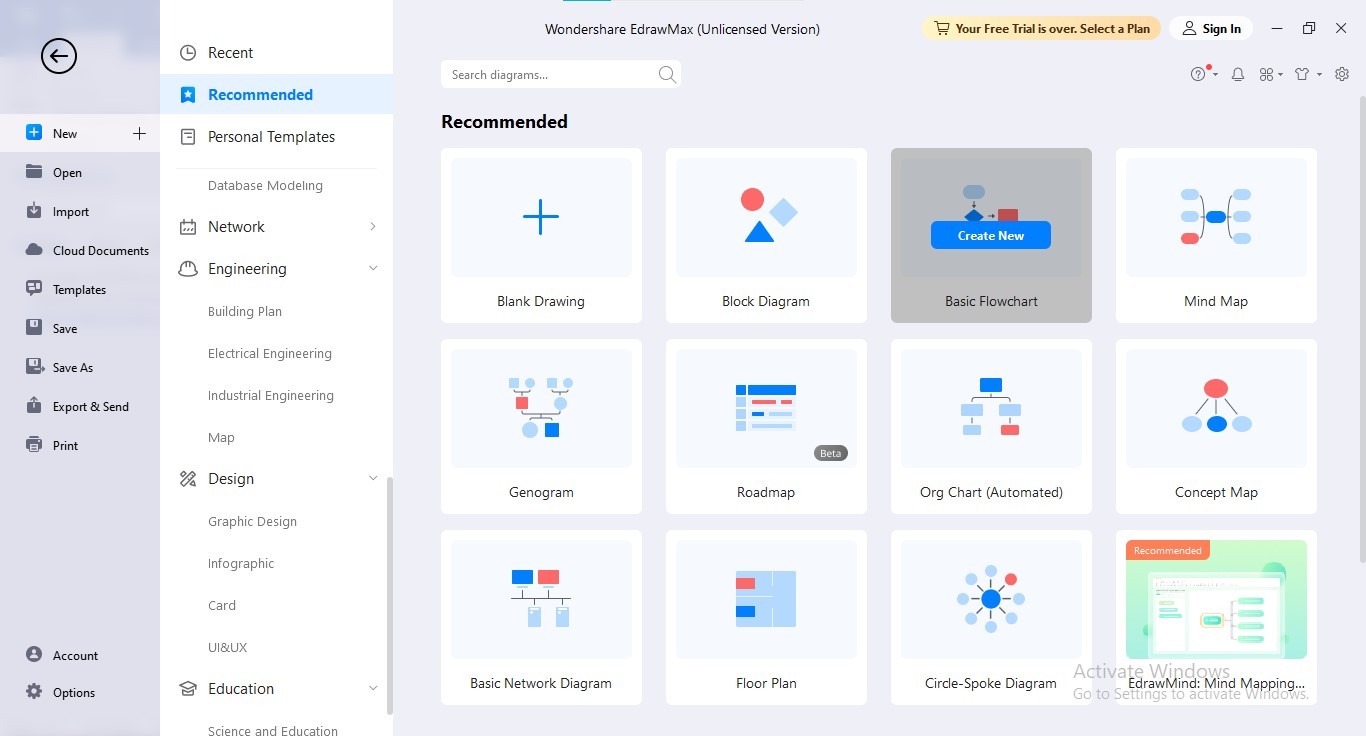
- Step 3: To construct a do while loop flowchart, add the "Start" box to initiate it, introduce your action by adding the "Process" box, and implement the condition by introducing the "Decision" box.
- Step 4: Set the statements of your conditions as "Yes" or "No"; progress the loop by inserting a connector to connect the condition box with the process box to repeat the process. Contrarily, stop the process by adding the "Stop" box if your set criterion turns to "No". However, the do while loop will execute once, even if the given statement is wrong.
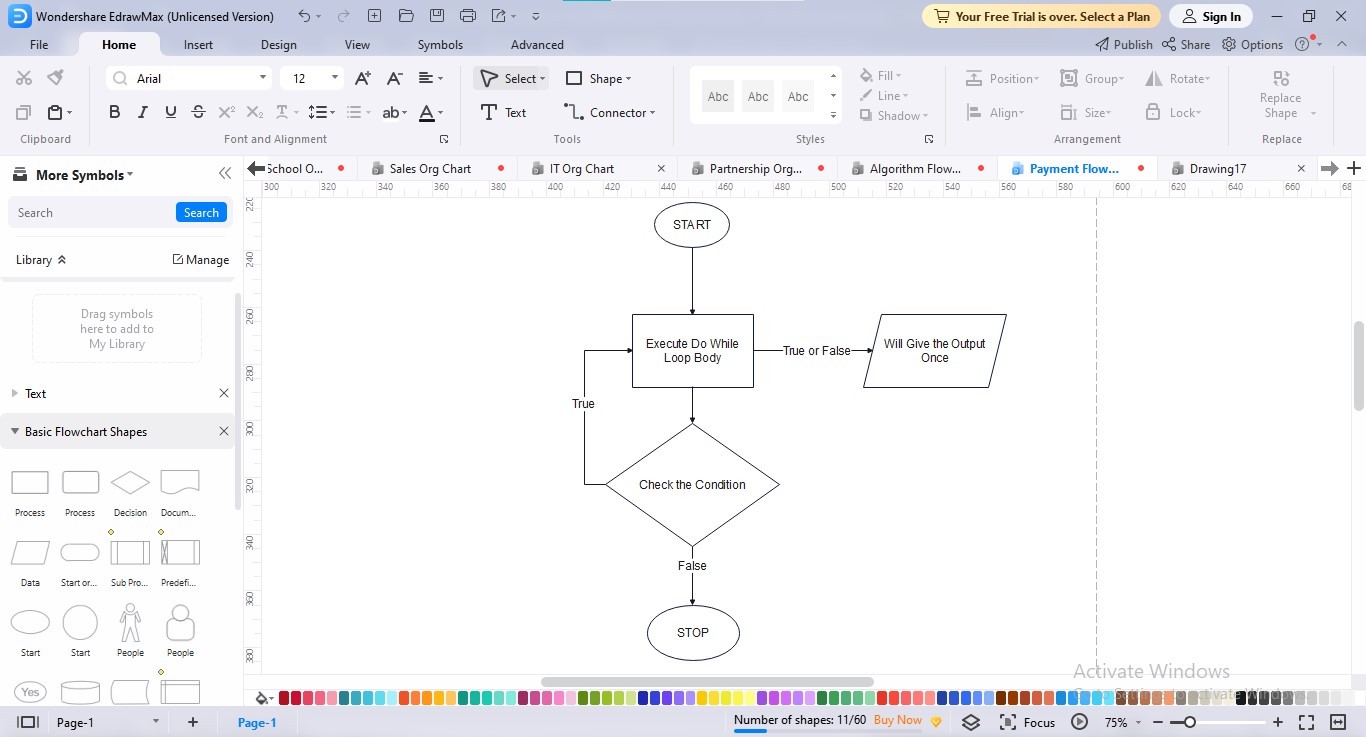
- Step 5: Personalize your do while flowchart diagram by applying the theme, color scheme, background, text, or layout of your choice.
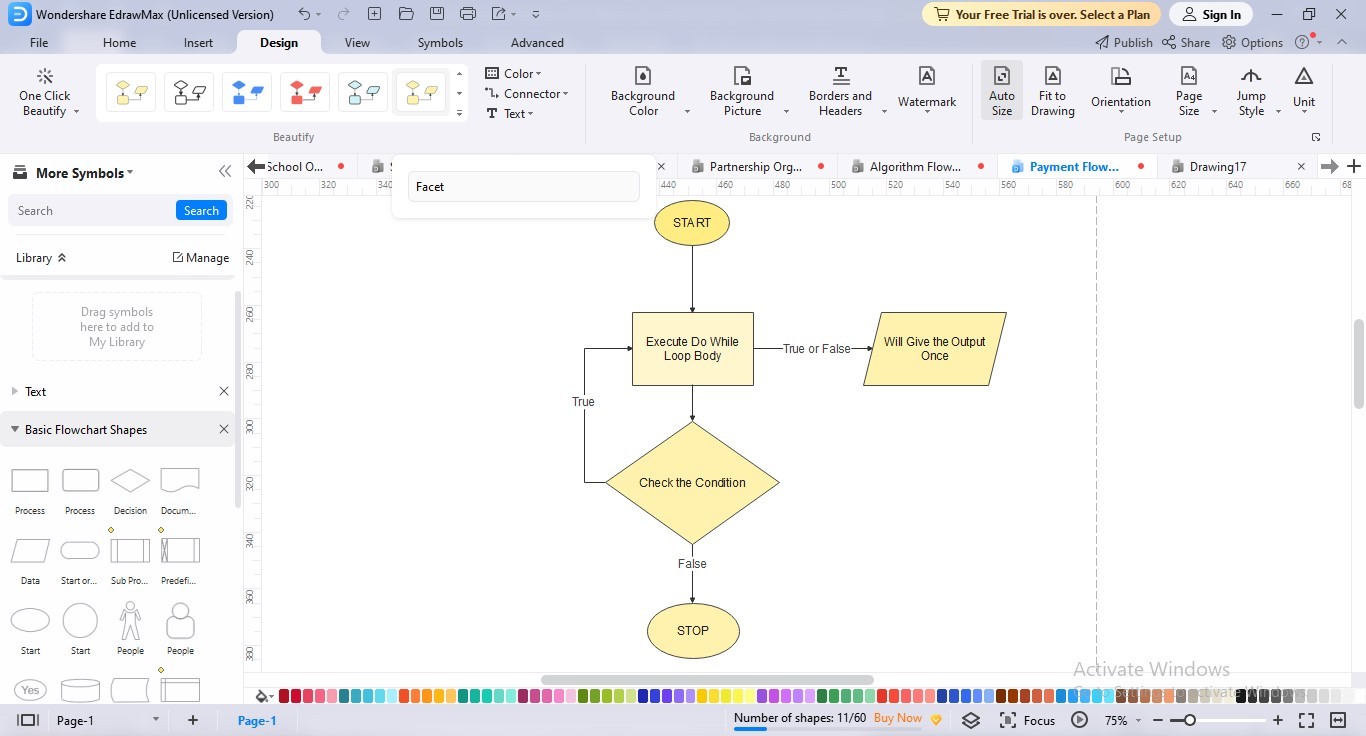
- Step 6: To export your do while loop chart, click the "Export" icon provided at the top bar.
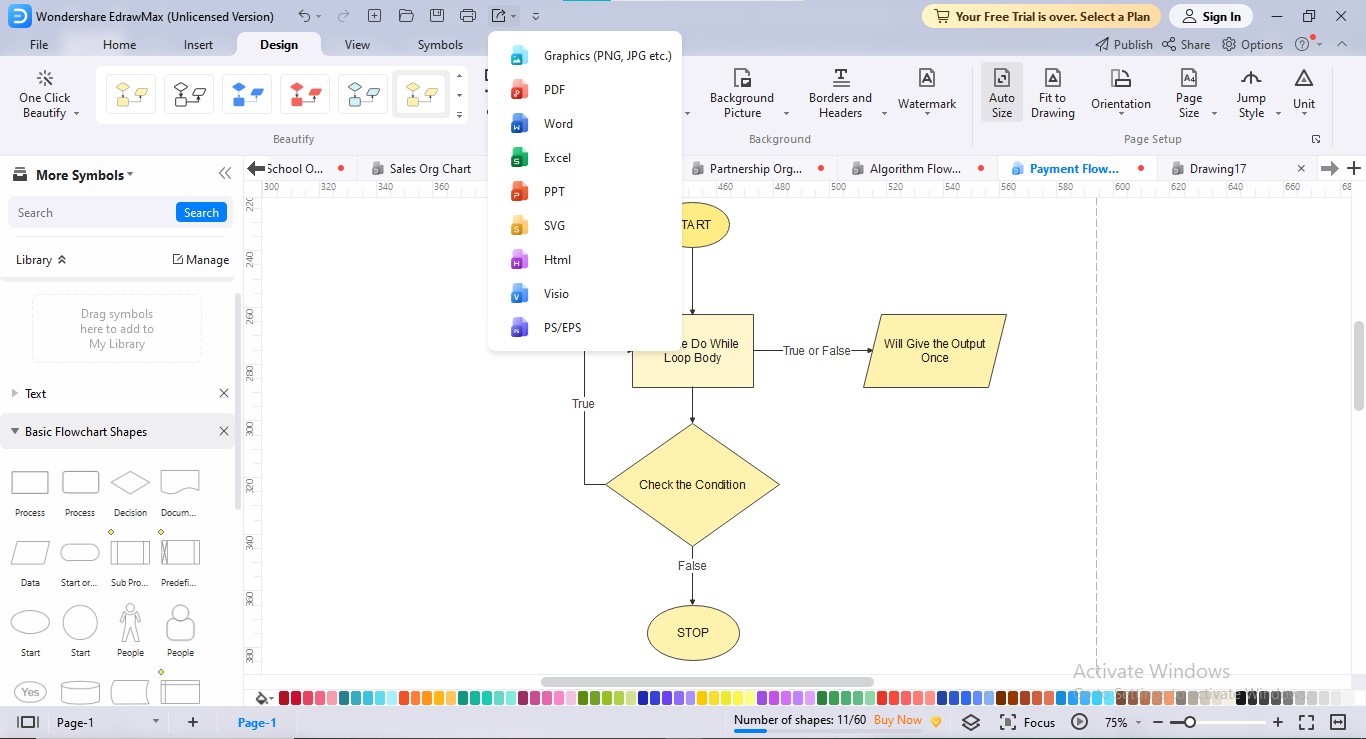
8. Conclusion
do-while is one the fastest looping structures used to repeat a block of information or code repeatedly without hassle. Given this convenience, do-while loops can be implemented in flow diagrams on all scales. Since flowcharts or diagrams play a vital role in every field or organization, you need to make it easy to manage and clearer by utilizing such iterative structures. Therefore, here we have elaborated on a detailed process of implementing a do-while loop in flowchart.

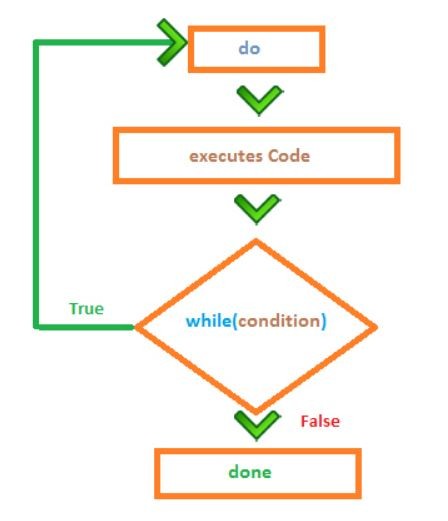
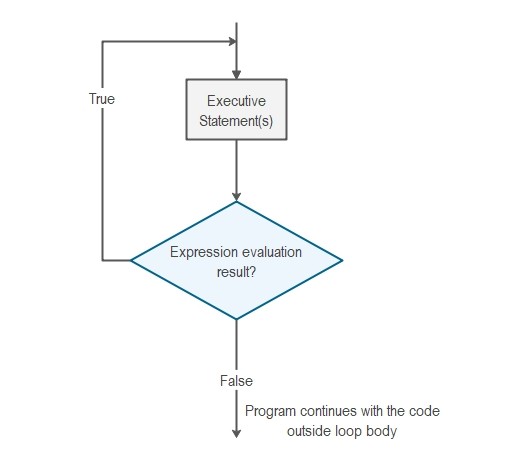
 below.
below.  below.
below. 




